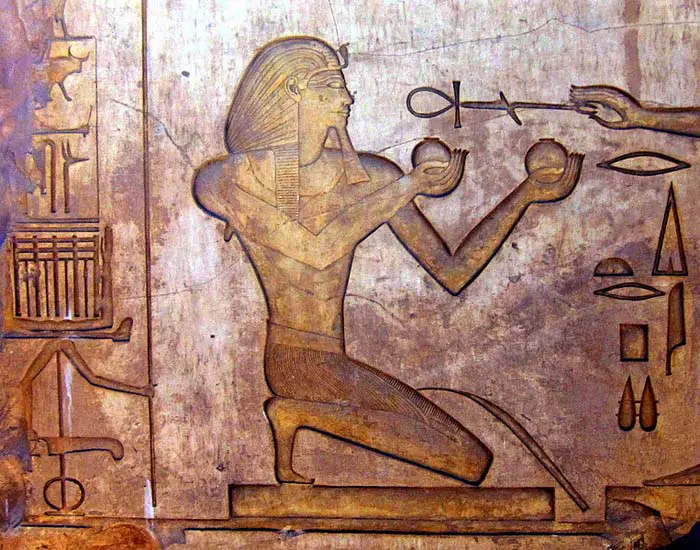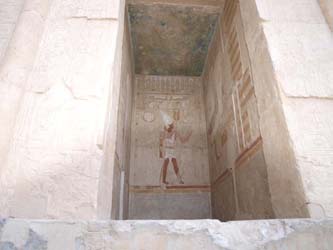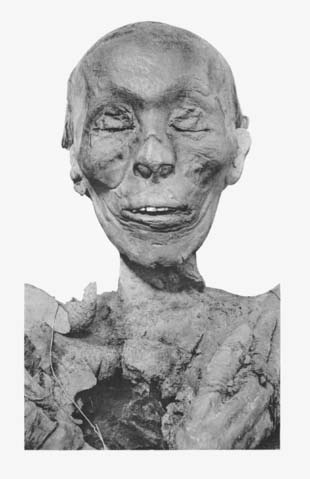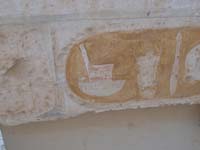Thutmose II
Thutmose II was the 4th pharaoh of the 18th dynasty. There is some speculation surrounding how long he reigned, but most historians believe it was anywhere from 3 to 13 years. Unfortunately, for Thutmose II, the most significant aspects about him were his family. The woman he married, Hatshepsut (who was also his half sister) was well-liked and powerful in Egypt. The boy who succeeded him, his son Thutmose III, grew to be one of the greatest leaders ancient Egypt has ever seen.
Thutmose means “born of Thoth”. Thoth the god of scribes and considered to be the heart and tongue of Ra. Thoth is one of the most important deities of ancient Egypt.
Thutmose II’s Family Tree
Thutmose II was born to Thutmose I and a secondary wife, Mutnofret. Thutmose II’s older brothers, Wadjmose and Amenmose, died before they could ascend to their father’s (Thutmose I’s) throne. This made Thutmose II the heir. Thutmose II was a weak man, but cunning enough to realize he should marry into true royalty to secure his kingship. Hatshepsut, both Thutmose II’s half sister and cousin, was the oldest daughter of Thutmose I and his principal Queen, Ahmose. Hatshepsut’s influence over Egypt secured Thutmose II’s leadership once he married her. Together, they had a daughter, Neferure. Thutmose II’s only heir was Thutmose III, born to Iset, a secondary wife.

© JMCC1 - Relief of Thutmose II at Karnak
Questions about the Length of Thutmose II’s Reign
It is hard for historians to determine the exact length of Thutmose II’s reign. Many historians believe he ruled between 3 and 13 years. After his death, Hatshepsut had his name removed from monuments and temples. Once Hatshepsut removed her husband’s name, she replaced it with her own. Once Hatshepsut died and Thutmose III took over as Pharaoh and no longer co-regent, he tried putting his father’s name back onto some of these buildings. These inconsistencies have scholars pinpointing his reign to be approximately from 1493 BC to 1479 BC.
Campaigns
Thutmose II managed to crush a rebellion in Kush by sending an army to Nubia. His armies also stopped rebellions in the Levant (historic Palestine, Israel and Syria). They also defeated a group of nomadic Bedouins in the Sinai Peninsula. Even though Thutmose II did not lead these campaigns himself, he is credited with the results. The armies were, in fact, led by the king’s generals.

© isawnyu - Relief of Thutmose II
Monuments
One of the ways Pharaohs are remembered are by the monuments they leave behind. Since Hatshepsut had her husband’s name removed from many monuments, it’s hard to determine what was originally built by him. However, a few monuments do remain including some in Kumma, Semna and Elephantine. The largest monument credited to his reign is a limestone gateway at Karnak. At one time, it was at the front of the 4th pylon’s forecourt. During his reign, he erected a festival court for the ancient Egyptians here. Unfortunately, for Thutmose II, the blocks used for this gateway were eventually taken down and used as a foundation for Amenhotep III.
Thutmose II and his wife, Hatshepsut, are depicted both together and separate in scenes on the Karnak gateway. Many historians believe that Hatshepsut was the real power of Egypt even during Thutmose II’s reign. Hatshepsut claimed that her father (Thutmose I) wanted them to rule together. Plus, both foreign and domestic policies were similar during Thutmose II’s reign and during Hatshepsut’s reign afterward.
Thutmose II’s Mummy and his Burial Chamber

© G. Elliot Smith - The Mummy of Thutmose II
Neither a royal tomb nor a mortuary temple for Thutmose II has ever been identified. His mummified body was found with the royal cache of mummies at Deir el-Bahari (also referred to as the Theban Necropolis). The royal cache held nearly 20 other mummified kings.
Thutmose II’s mummy was in poor shape when it was unwrapped in 1886 by Gaston Maspero. It had been severely damaged after his death by ancient tomb robbers. Thutmose II’s face and the shape of his head resembled Thutmose I’s very closely, indicating that he was the king’s son. Thutmose II died in his early 30’s. He had a skin disease that could not be covered by the act of embalming. His skin had patches and was covered in scars.
The state of Thutmose II’s mummy revealed that he was a weak man. His thin body was shrunken and appeared to lack muscle. His skull was bald in patches. These conditions in addition to the condition of his skin were likely due to a disease that killed him.
Thutmose II Facts
- Thutmose II was the son of Thutmose I and the father of Thutmose III, one of the most prolific pharaohs in Ancient Egypt.
- His reign period is disputed, due to Hatshepsut's attempts to erase and replace his name with her own.
- Thutmose II sent armies led by his generals on successful campaigns against rebellions and nomads.
- His mummy was discovered in the royal cache at Deir el-Bahari in 1886.
- His preserved body appears weak and presents evidence of a disease that was very likely the cause of his death.

